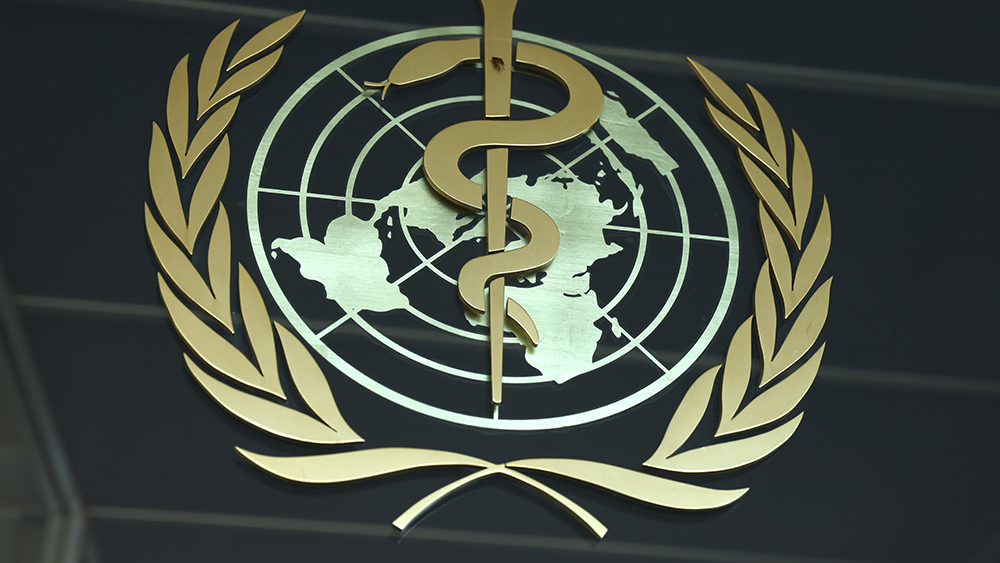
Mamavation's EPA-certified laboratory has discovered the presence of PFAS "forever chemicals" in several popular facial tissue brands sold today. PFAS, or per- and polyfluoroalkyl substances, are chemicals that have been used for decades to make products resistant to grease, oil, stains and water.
According to studies, exposure to PFAS in the environment has harmful effects on humans and animals.
Mamavation's investigation of facial tissues
The study involved sending 13 different brands of facial tissue to an EPA-certified lab for analysis. (Related: Common bandages contain alarming levels of cancer-causing PFAS, which leach directly into the blood.)
These tissues, sourced from purchases or donations by community members between January 2023 and April 2024, were not provided by the manufacturers. The selection included a range of tissue types, such as lotion-free, dye-free, soft, hypoallergenic and sustainable options, all intended for everyday use. Surplus tissues were donated to a local community center.
Testing methodology
The EPA-certified laboratory used a marker testing method to detect potential PFAS in the tissues, employing organic fluorine as an indicator. This marker is significant because all PFAS chemicals are carbon-based compounds containing fluorine.
The specific testing method, known as the "Determination of total fluorine by oxygen flask combustion and ion-selective electrode," measured the total fluorine content. If the total fluorine was at least 10 parts per million (ppm), the lab performed a further test to determine the free fluoride ion and then calculated the organic fluorine content. This testing can reveal the presence of PFAS, including fluoropolymers, pharmaceuticals and common hydrofluorocarbon refrigerants like R-134a and HFO-1234yf, which are types of PFAS not suitable for contact with food and personal care products such as facial tissues.
According to Dr. Scott Belcher, associate professor at the Centre for Environmental & Health Effects of PFAS at North Carolina State University, fluoropolymers, like polytetrafluoroethylene (PTFE), are common PFAS forms that may contribute to the organic fluorine found in facial tissues. While tests for specific PFAS, like PFOA (perfluorooctanoic acid), cannot directly detect PTFE, total organic fluorine (TOF) analysis accounts for all PFAS contaminants, including PTFE. This makes the testing method a useful "spot-check" for consumer products.
Findings
The analysis found that 46 percent of the tested facial tissue products contained PFAS, with six out of 13 brands showing organic fluorine levels above 10 ppm.
Notably, 66 percent of the products with organic fluorine detections were advertised as made from bamboo.
All of the tested products with such detections claimed to have environmentally friendly features, such as being made from bamboo, holding a "sustainable" certification like the Forest Stewardship Council (FSC) or being classified as "tree-free."
The detected organic fluorine levels ranged from 10 ppm to 25 ppm, suggesting contamination in the supply chain rather than the intentional addition of PFAS.
These findings highlight that "sustainability" claims do not necessarily mean the absence of PFAS. They also show that bamboo-based facial tissues might have contamination issues that are not present in larger or more conventional tissue brands.
Facial tissues with PFAS indications
The following facial tissue products, tested at Mamavation's EPA-certified laboratory, showed the presence of organic fluorine – a marker for PFAS:
- Puffs Plus Lotion (25 ppm organic fluorine)
- Cloud Paper 100 percent Bamboo Tissue Paper (17 ppm organic fluorine)
- Gaia's 100 percent Recycled Treeless and Plastic-Free Facial Tissue (16 ppm organic fluorine)
- Amazon Aware 100 percent Bamboo Facial Tissues (12 ppm organic fluorine)
- The Cheeky Panda Bamboo Ultra Sustainable Tissue (10 ppm organic fluorine)
- Who Gives a Crap You Smell Like a Fancy Candle Bamboo Tissue (10 ppm organic fluorine)
Facial Tissues with minimal PFAS
These facial tissue products were also tested and found to have "no detectable levels of organic fluorine." The detection limit for the tests was 10 ppm, so any amount below this threshold was not detectable. These tissues, while not using the most environmentally friendly materials, are considered to be "better" due to their lower PFAS content and are typical of regular or sensitive skin tissues:
- Kirkland Facial Tissue
- Kleenex Ultra Soft Hypoallergenic Tissues
- Scotties Premium White Tissues
- Up & Up (Target) Kids Tissue
Facial tissues with acceptable PFAS levels
These facial tissue products also showed no detectable organic fluorine. They are made from materials that are less harmful to the environment, making them the "best" options:
- Caboo Tree Free Facial Tissue
- Eco Soul Bamboo Ultra Soft Facial Tissues
- Seventh Generation 100 percent Recycled Facial Tissues Whitened without Chlorine Bleach 2-Ply Tissue
Health risks linked to PFAS "forever chemicals"
PFAS "forever chemicals" pose significant risks to human health and the environment due to their persistence, toxicity and ubiquity. These substances can remain in the human body for years or even decades.
The impact of PFAS exposure through open wounds is not well understood, but it could be a pathway for these chemicals to enter the body. Additionally, the effects of PFAS being absorbed into bodily tissues and circulating within the body are not fully known, but certain areas are generally vulnerable to toxic substances like PFAS.
It is crucial to minimize exposure to PFAS from sources such as food, water and consumer products, including facial tissues. Here are some of the health effects linked to PFAS exposure:
Reduced immunity
A study published in Heliyon linked PFAS exposure to weakened immune function. It highlighted evidence of immunosuppression and an increased risk of infections, allergies, asthma and atopic dermatitis following exposure to PFAS during pregnancy, infancy and early childhood.
Increased allergy and asthma risks in children
A study published in Environment International suggests that PFAS exposure may have immunosuppressive effects, increasing the risk of respiratory infections, like bronchitis and pneumonia, as well as throat infections and gastrointestinal issues such as diarrhea and gastric flu in children.
Impaired growth and development
A study published in Current Environmental Health Reports linked prenatal exposure to common environmental contaminants, including PFAS, to adverse health outcomes during pregnancy, birth and later in life. Specifically, the research identified an increased risk of childhood obesity, fetal growth restrictions, gestational diabetes and pre-eclampsia associated with PFAS exposure.
Endocrine disruption
The Endocrine Society notes that nearly 85,000 synthetic chemicals are currently in use industrially, with more than 1,000 of these potentially functioning as endocrine disruptors due to their specific characteristics. Among the most frequently studied and recognized "forever chemicals" include:
- Atrazine. A prevalent herbicide applied extensively to control weeds in crops, such as corn, sorghum and sugarcane.
- Bisphenol A (BPA). This chemical is used in the production of polycarbonate plastics and epoxy resins and is found in items such as food containers, toys, and various other products. BPA is notably present in the lining of some canned goods and beverages.
- Dioxins. These contaminants are produced as byproducts in certain industrial activities such as herbicide production and paper bleaching. Dioxins can also be emitted into the atmosphere from burning waste and wildfires.
- Perchlorate. A colorless salt used for manufacturing explosives, fireworks and rockets, which may also contaminate groundwater supplies.
- Per- and polyfluoroalkyl Substances (PFAS). A diverse group of chemicals used in various applications, such as coatings for paper and textiles, firefighting foams and nonstick cookware.
- Phthalates. A group of chemicals used to make plastics more flexible, phthalates are found in a variety of products, such as food packaging, fragrances, medical devices, personal care items and toys. Examples include phthalates in hair spray, nail polish and shampoo.
- Phytoestrogens. Plant-derived compounds that mimic estrogenic activity in the body, with soy products being a common source.
- Polybrominated diphenyl ethers (PBDEs). Chemicals used as flame retardants in products like carpets and foam furniture.
- Polychlorinated biphenyls (PCBs). Historically used in electrical equipment and various fluids and plasticizers, PCBs were widely manufactured until their global ban in 1979.
- Triclosan. Previously used in some antimicrobial and personal care products, including liquid soaps and body washes.
Read more stories like this at Products.news.
Watch the following video about "Beyond the data – PFAS and protecting your health."
This video is from the Daily Videos channel on Brighteon.com.
More related stories:
Scary new study reveals PFAS “forever chemicals” cam seep through human skin.
18 Popular US-made soft contact lenses found to contain high levels of harmful PFAS.
Sources include:
Please contact us for more information.




















